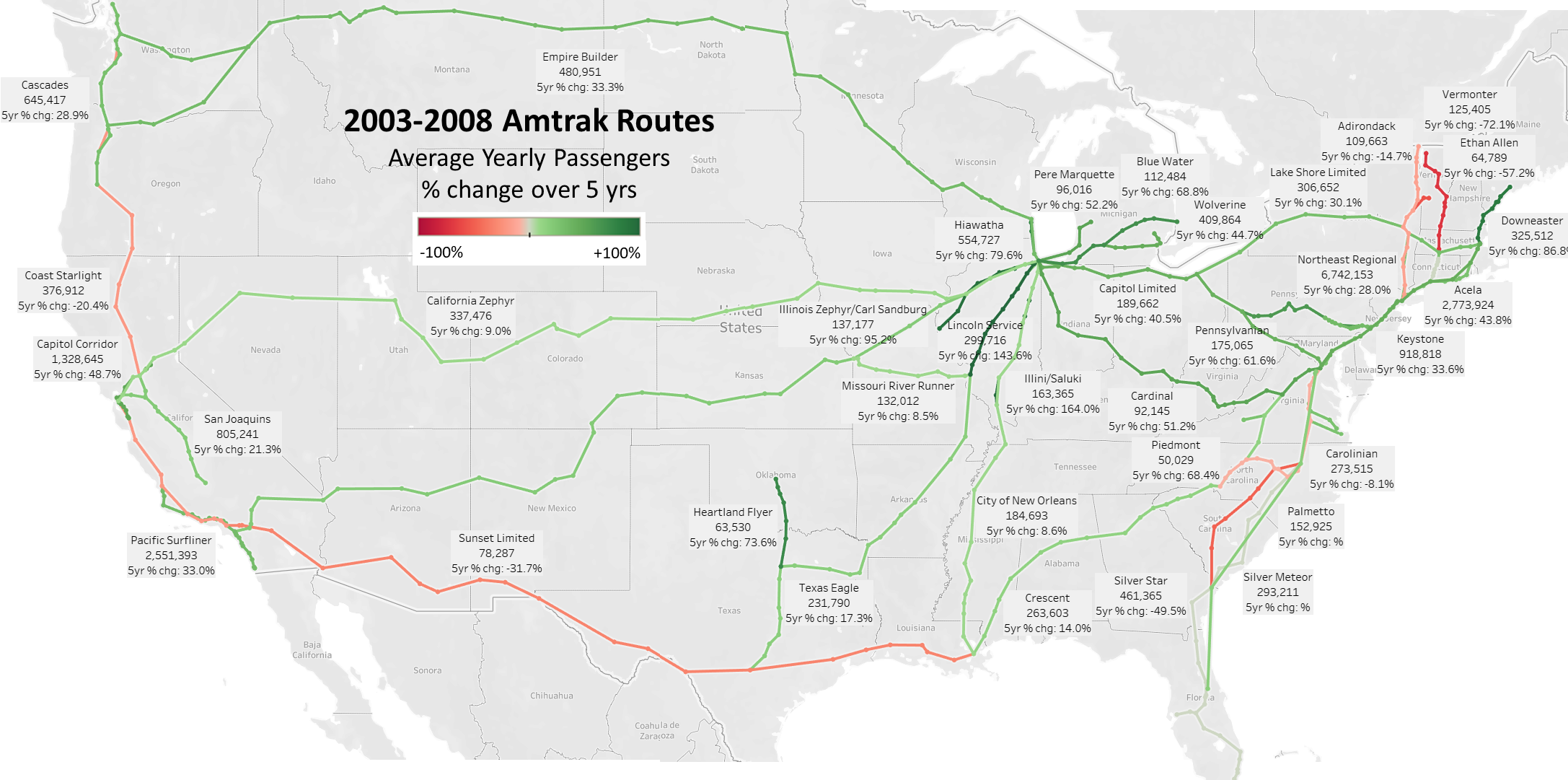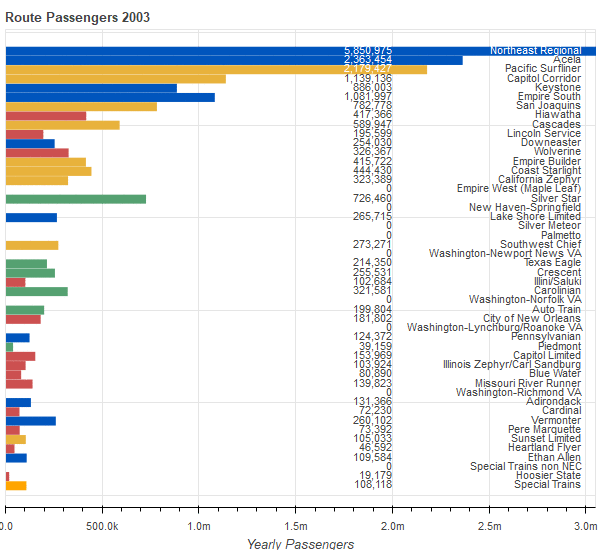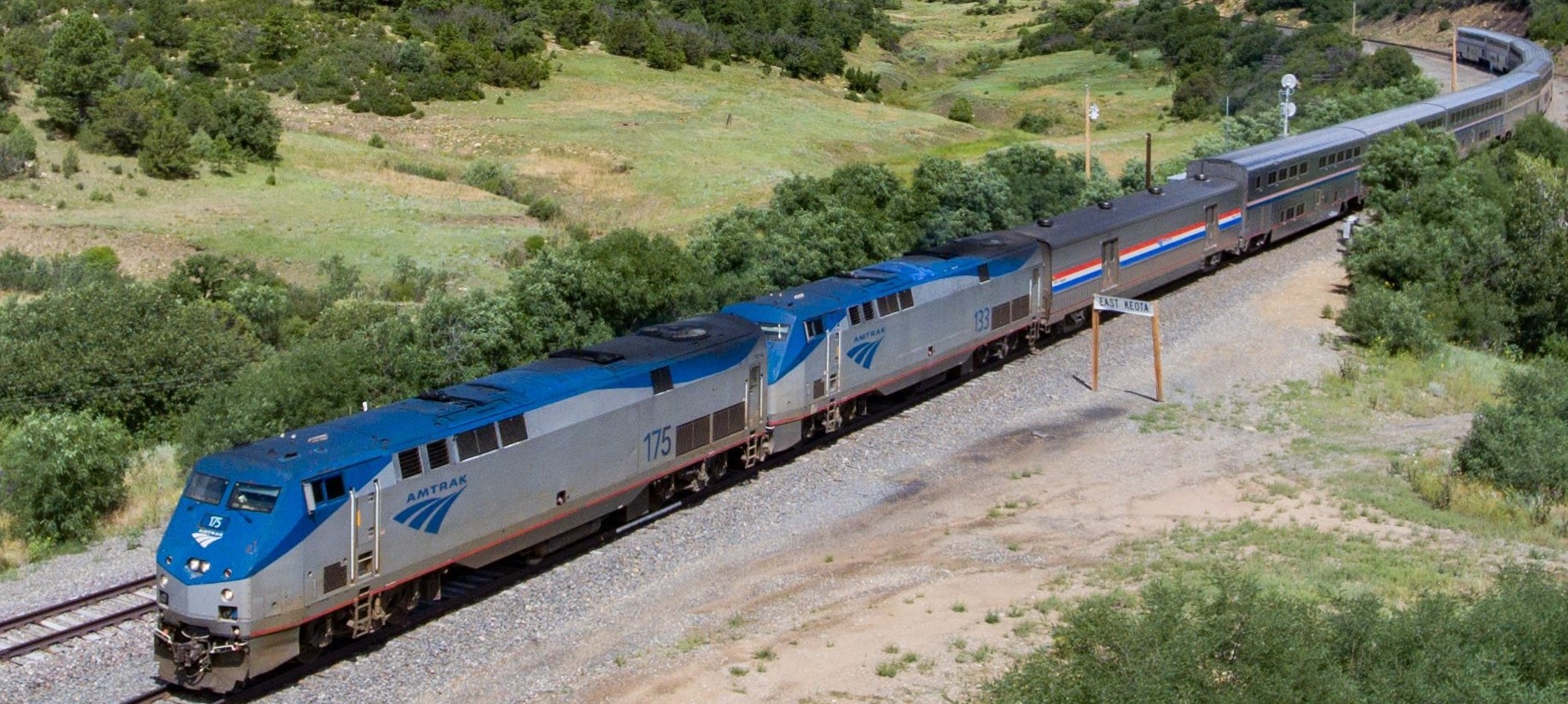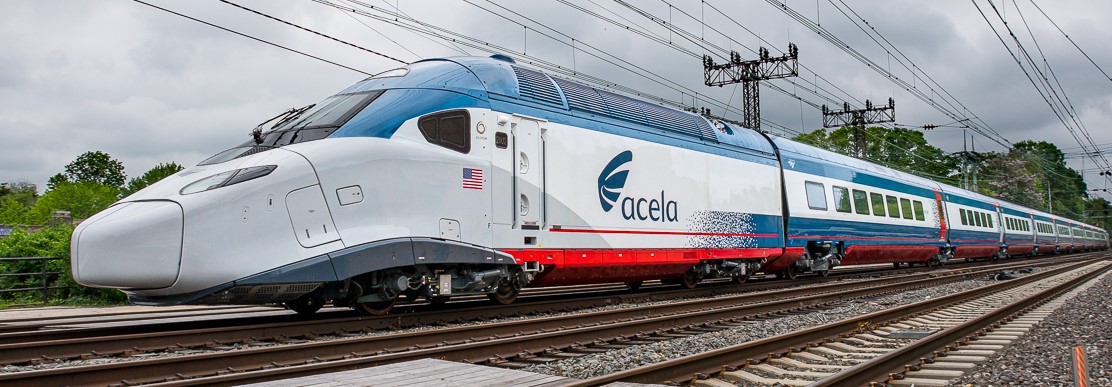Amtrak Passenger History in Numbers
Passenger rail service has moved people around the United States for nearly 2 centuries. While many different competing railroad companies criss-crossed the country for many years, the last 50 years, Amtrak has been the main intercity railroad. Below takes a brief look at the older history of Amtrak and a more in-depth look at more recent route statistics. Scroll through the page to walk through the history of Amtrak.
Scroll down
1970: Declining ridership prompts Amtrak formation
US Yearly Passenger-Miles traveled (in Billions)
Ridership and finances stabilize :1980
1990: Loosening restriction
Amtrak Revenue and Expenses (in Millions)
Acela launches and overall ridership trends up :2000
2008: Sustained Growth

Big routes get bigger :2010
2013: Growth slows and passenger numbers plateau

Positive trends leading into the next decade :2019
An Uncertain Future Ahead
Amtrak has many plans for the next several years to improve service. But those plans were made prior to the COVID-19 pandemic that has drastically reduced travel. The future remains in doubt until the pandemic subsides, but hopefully when passengers return Amtrak can seize the opportunity to grow once more.
While Railroads dominated intercity travel through the early 1900's, by 1960 both air travel and bus travel were serving more passenger-miles than trains. Amtrak was formed in 1970 (and began service in 1971) through an act of Congress merging the remaining Railroad corporations.
While total travel grew by a factor of 10 from 1960-2000, rail travel stayed mostly flat during that time. Amtrak survived through the years, but airlines became the dominant form of long distance travel and bus service took a larger share of the short-distance intercity travelers.
Ten years into operation for Amtrak, the organization still required substantial subsidies from the government, but had generally stabilized its ridership and finances. In 1981, the government officially took part ownership through preferred stock for additional assistance.
Ridership stayed around 20 million passengers throughout the decade, which after several decades of decline, flat ridership and a stable route network was a (small) move in the right direction.
Although the government once again set goals to have Amtrak operating without a subsidy, specifically granting greater operational freedom (like allowing route changes) with the Amtrak Reform and Accountability Act of 1997.
Expenses still exceeded revenues into the 2000's, but some of the changes set the stage for ridership growth that Amtrak would experience over the next decade.
After much anticipation, Acela Express service launches in December 2000. While a commercial success for Amtrak, its average speeds remained dwarfed by high speed service in other countries around the globe.
After several decades of minimal passenger growth, Amtrak started steady growth in the 2000's. From 2003 to 2008, ridership grew 23.4M to 28.7M a 22.6% increase.
The biggest gainers in percent growth during these years came on shorter Midwest routes linked to Chicago, but most routes saw at least moderate gains in percentage growth.
During the first decade of the 2000's, Amtrak's largest routes solidified their popularity with large gains in raw passenger numbers even if other smaller routes had high percentage growth.
While the Midwest has a very diverse network of routes and stations, the largest passengers totals for Amtrak are still driven by the routes of the Northeast and West Coast.
After continuing to grow even through the Great Recession, passenger numbers hit a local peak in 2013 and have remained mostly flat in the years since between 30-32M.
The last 6 years have been stable with the route map looking almost entirely the same (minus the Hoosier State line that ended its run in 2019).
The last two decades have shown that there remains an appetite in America for rail service and that when invested in properly Amtrak can continue to grow and provide viable travel options for large portions of the country.
Hover over individual routes on the map or in the chart below to see specific yearly information between 2003 and 2019.
 Image from
Image from  New Acela train image from
New Acela train image from